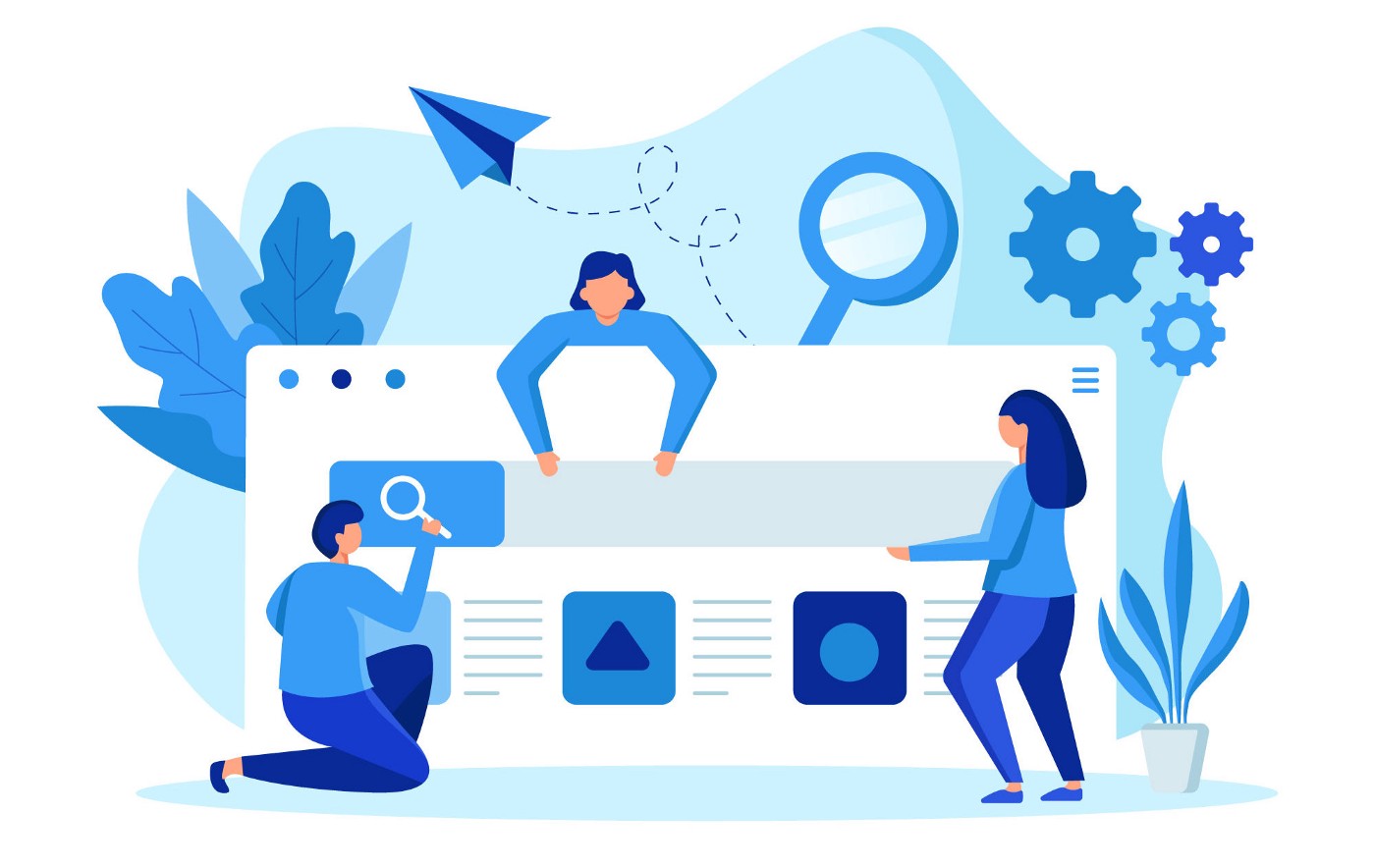Hello!
If you’re a marketing professional, then you know that understanding the customer value journey is essential to your success. After all, this journey is what helps you create powerful marketing campaigns that speak directly to your target audience’s needs and desires, enriching their customer experience.
 By understanding the customer value journey, you can create marketing campaigns that address each stage of the journey and help move your customers toward a purchase.
By understanding the customer value journey, you can create marketing campaigns that address each stage of the journey and help move your customers toward a purchase.
In this guide, we’ll break down each stage of the customer value journey so that you can start creating more effective marketing campaigns today.
A customer value journey is an essential tool for understanding how customers interact with your brand—and how you can improve those interactions to create more valuable relationships.
Essentially, the customer value journey details the different stages that a customer goes through when making a purchase, from initial awareness all the way to product loyalty. By mapping out this journey, businesses can gain valuable insights into their customers’ needs and pain points—insights that can be used to craft more effective marketing strategies.
 The journey typically consists of eight distinct stages: Aware, Engage, Subscribe, Convert, Excite, Ascend, Advocate, and Promote. At each stage, the customer has different needs and expectations, and it is the company’s job to ensure that they are met.
The journey typically consists of eight distinct stages: Aware, Engage, Subscribe, Convert, Excite, Ascend, Advocate, and Promote. At each stage, the customer has different needs and expectations, and it is the company’s job to ensure that they are met.
By understanding the customer value journey, businesses can create more personalized experiences that lead to customer loyalty and in turn happy customers.
Why Should You Invest in a Customer Value Journey?
Aside from building an invaluable interaction with the customers, the primary priority is to help businesses identify and target key moments that are critical to conversion, such as when a customer is first exposed to a brand or when they are considering making a purchase.
 There are many benefits to investing in a customer value journey. For one, it can help businesses to attract and retain more customers. By providing a positive experience at each journey stage, businesses can build loyalty and encourage potential customers to keep coming back.
There are many benefits to investing in a customer value journey. For one, it can help businesses to attract and retain more customers. By providing a positive experience at each journey stage, businesses can build loyalty and encourage potential customers to keep coming back.
Additionally, a customer value journey can help businesses to improve their bottom line by increasing sales and reducing costs. By understanding what customers want and need, businesses can make more informed decisions about pricing, product development, and operational efficiencies.
Finally, a customer value journey can help businesses to better understand their competition and find new ways to stand out in the marketplace.
Understanding the Customer Value Journey Map
Quite akin to how you form relationships, realizing the value of the customer’s journey comes from bonding beyond the superficial. It’s not just about reaching out through numerous social or marketing channels and putting yourself out there to lure prospective customers.
 You need to build the customer’s relationship with your brand by letting them know exactly how your product will solve their troubles and then holding their hand and guiding them towards the final decision, all the while keeping their interest in mind.
You need to build the customer’s relationship with your brand by letting them know exactly how your product will solve their troubles and then holding their hand and guiding them towards the final decision, all the while keeping their interest in mind.
The thing you need to grasp here is how fickle-minded customers can be when it comes to deciding on an online purchase.
People are bound to go astray and get distracted by various similar services and move on to other brands simply because they’re offered a comparatively better deal.
A customer journey map is something like a strategy designed to lead your prospective and new customers down the 8 stages, ensuring satisfaction and plenty of help along the way.
8 Elements of a Customer Value Journey
Here is what you should expect at every step of the customer value journey in your quest to lay down an effective marketing strategy that works.
Stage 1: Awareness
 Customers need to be aware of both the problem they’re facing and your business’s solution. Successful marketing tactics are where the customers didn’t know they were facing troubles till the moment they come across your product or service and realize you have a miraculous answer to their needs.
Customers need to be aware of both the problem they’re facing and your business’s solution. Successful marketing tactics are where the customers didn’t know they were facing troubles till the moment they come across your product or service and realize you have a miraculous answer to their needs.
Paid advertising, search engine optimization, PR tactics, social media posts, and word-of-mouth advertising are some of the avenues you can employ to spread awareness of your brand, letting your target audience know you have what they need. Get their attention, inform them of their troubles, and finally educate them on how your service fits their requirements; all this without any strings attached.
Consider this an entry-point offer as your first step in filing your sales funnel.
Stage 2: Engagement
What comes after the first date is a few more dates to keep the interest building. As a business, you’re still offering yourself on a gold platter to your intended audience with no strings attached.
 In turn, your potential customer is also getting to know you better and judge for themselves if your product is as advertised and whether they can afford to trust you with their time and investment.
In turn, your potential customer is also getting to know you better and judge for themselves if your product is as advertised and whether they can afford to trust you with their time and investment.
Whether it’s more time spent browsing on your website or a higher click-through rate, and even some comments or shares, you need to keep earning their trust by offering relevant value. Spend generously on content marketing by actively promoting their interests.
Compel your target audience to take a step deeper into your digital marketing strategy.
Stage 3: Commitment
Commitment is best served when it isn’t asked for. However, that’s hard to come by these days when you’re the first one seeking some form of return for your hard-earned luring. Loyal customers might be easy bait, but new customers are challenging to attract.
 When you’ve spent considerable time and resources in keeping your audience engaged, it’s only natural to seek commitment in a small manner.
When you’ve spent considerable time and resources in keeping your audience engaged, it’s only natural to seek commitment in a small manner.
Again, this requires some more enticing and cajoling through a relevant lead magnet like an interesting newsletter for free or a first-time offer, and the more common limited-time free trials.
And all you need from your audience is their contact detail, preferably their email id, for a better chance at nurturing the step-by-step process.
Stage 4: Conversion
Getting your product browsers to convert into paying entities is your goal at this point in the customer value journey. If you’ve been offering the ideal value to your customers so far, you’ll see results in this stage.
Again, you put forth a commitment offer, but not for free. The offer is a high-value and low-risk one that allows your prospects to test the water and not go in too deep.
It isn’t just a free offer but then your purpose isn’t to gain profit either. You’re charging of a small fee for further commitment is to make up for customer acquisition costs. The primary goal is to make the switch seamless, from a prospective customer to a paying customer.
Stage 5: Satisfaction
 When you make a purchase, there’s a lingering feeling of something warm, akin to a pat on the back for having completed a purchase. In this stage, you’re going to build on this feeling by ensuring a convenient purchase experience as well as a dedicated follow-up experience.
When you make a purchase, there’s a lingering feeling of something warm, akin to a pat on the back for having completed a purchase. In this stage, you’re going to build on this feeling by ensuring a convenient purchase experience as well as a dedicated follow-up experience.
You know your audience better. So, employ marketing tactics that aim to please them, bonus offers or features, surprise coupons, or even welcome emails encouraging them that they’ve made the right decision by telling them how their problems will now be solved. Happy customers are now your ideal customer type.
You need to keep your audience engaged even after the purchase and keep working on the relationship to ensure long-lasting customer loyalty and of course, further their customer journey.
Stage 6: Ascension
The next step in your sound marketing strategy is to reap profits through repeat buyers and sales. This involves bombarding your existing customers, within reasonable limits, with sales options that are bigger in value and inviting them to spend more often based on their preferences.
Primed for profit, your digital marketing tactics should involve upselling and targeted solutions like add-ons to compel them into thinking they’re better off with the big-ticket item, coupled with a complimentary offer, than the others.
So, you’re essentially acquiring buyers and converting customers seamlessly, although unconscious to them, into your brand advocates.
Stage 7: Referrals
 A referral is a powerful testimonial to your customer journey from someone who has already had a positive experience with your product or service. But referrals don’t just happen by accident.
A referral is a powerful testimonial to your customer journey from someone who has already had a positive experience with your product or service. But referrals don’t just happen by accident.
In order to generate referrals, you need to create a system that encourages customers to make them happen. There are a few key elements to this system.
-First, you need to make it easy for customers to refer your business to their friends and family. This means providing them with pre-written messages or sharing links that they can easily send via email, text, or social media.
-Second, you need to offer an incentive for customers who make referrals. This could be a discount on their next purchase or entry into a contest for a chance to win a prize.
-Finally, you need to follow up with customers who make referrals to keep the sales process going. This shows that you appreciate their help and makes them more likely to do it again in the future.
Stage 8: Promotion
This is the boss stage, the Promote Stage of your customer value journey. It’s challenging to find loyal customers who genuinely share their brand experience with the world. Promoting without gains is different from gaining referrals.
 People should be authentically excited and content with the help they’ve received from your services; enough to actively promote your brand through word-of-mouth marketing.
People should be authentically excited and content with the help they’ve received from your services; enough to actively promote your brand through word-of-mouth marketing.
They’re eager for someone else to try your products and give them the value they’ve experienced.
It’s also not about entertaining more sales for them.
However, since they’re your most valued species of customers, you need to reward them from time to time, maybe through an affiliate program or commission creating a win-win situation for all.
Also read:
- Explainer: Does My Company Need an HR Consultant?
- 4 Best Practices for Effective Email Newsletters
- Technology’s Impact On The Healthcare Industry
Final Thoughts on the Customer Value Journey Guide You Need
A well-defined customer value journey naturally moves your prospects through the above-mentioned stages, complimenting your marketing efforts. Your intended message then reaches and resonates with your ideal audience niche, targeting and maintaining a mutually symbiotic relationship with both your existing and prospective customers.
In simple words, while the customer value journey may seem like a lot to keep track of, understanding it is essential for any business owner who wants to be successful. By understanding the different stages of the customer value journey, you can create content and marketing strategies that appeal to your target audience and help increase sales.
Thank you!
Join us on social media!
See you!






